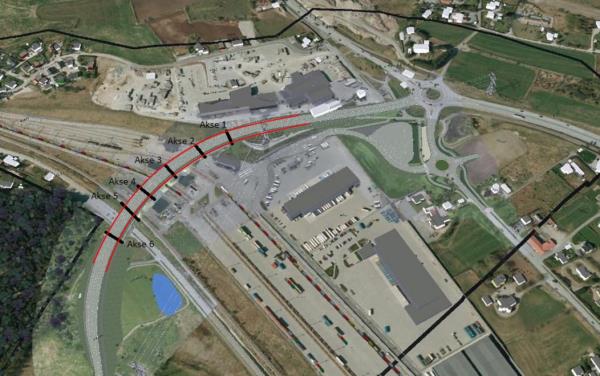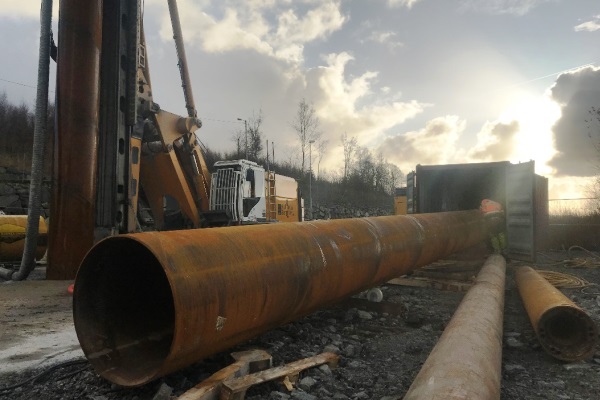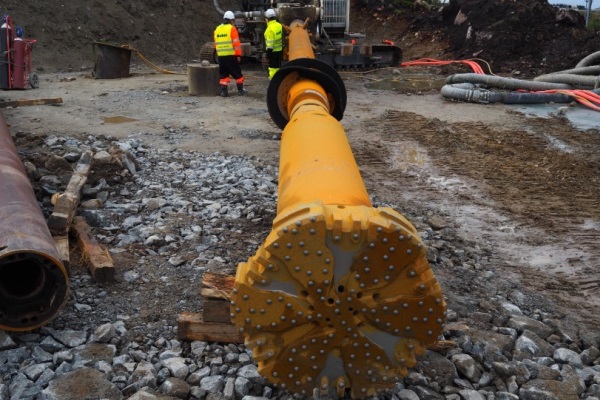Unofficial world record for RD900 - drilled to 70 m depth
The 248 m long and 25.2 m wide Brunholen Bridge will cross both an existing railroad and road. Its aim is to link up residence and industrial areas south of Sandnes, which is Norway’s seventh largest city located on the southwestern part of Norway. In combination with the new road it will relieve some of the traffic on the existing roads in the area.
Brunholen Bridge will be 248 m long and 25.2 m wide.
46 steel pipe piles were installed reaching down to depths of 69.4 m below the surface. “It will be the first time drilled of that size is installed and casted on such a depth”, says Bjarne Våge from Norwegian Public Roads Administration.
Hallingdal Bergboring AS is the piling contractor for the bridge project.
Test drillings showed that the ground conditions are divided into three layers composed by up to 17 m thick layer of sand and silt, organic rich clay up to 30 m and moraine as a base layer on top of bedrock. The foundation is based on 6 axis composed by 1600 m reinforced and casted RD900/14.2 piles with length from 7-71 m. They were drilled 1.5 m into bedrock. Every pile was video inspected after drilling to ensure that bedrock was reached. Ramming analysis in GRLWEAP concluded that installation of driven large diameter piles may be challenging and drilled RD® piles were selected as the most robust and safe solution for the project.
RD® piles were installed with a pilot on 914 mm.
85 ton RM20 rig was used for drilling the piles. It has 400 kN retraction force, 100 kNm rotation power and it was equipped with 24 inch hammer and reversible drilling system (RC). Penetration speed averaged on 12-15 m per day. Hallingdal Bergboring supported the rig with three operators and one construction manager throughout the installation period. The piling operation started August 2017 and ended April 2018 leaving the Brunholen Bridge and Hallingdal Bergboring with the new unofficial world record for RD900 piles – down to 70 m depth.
Attachments
Category and tags


